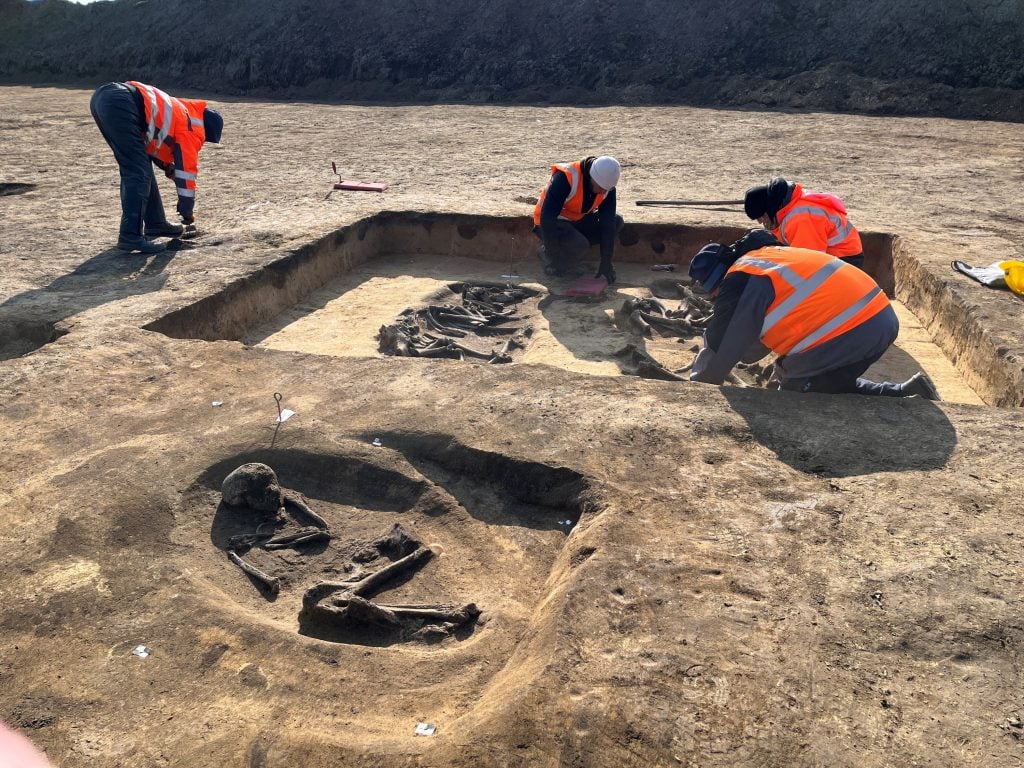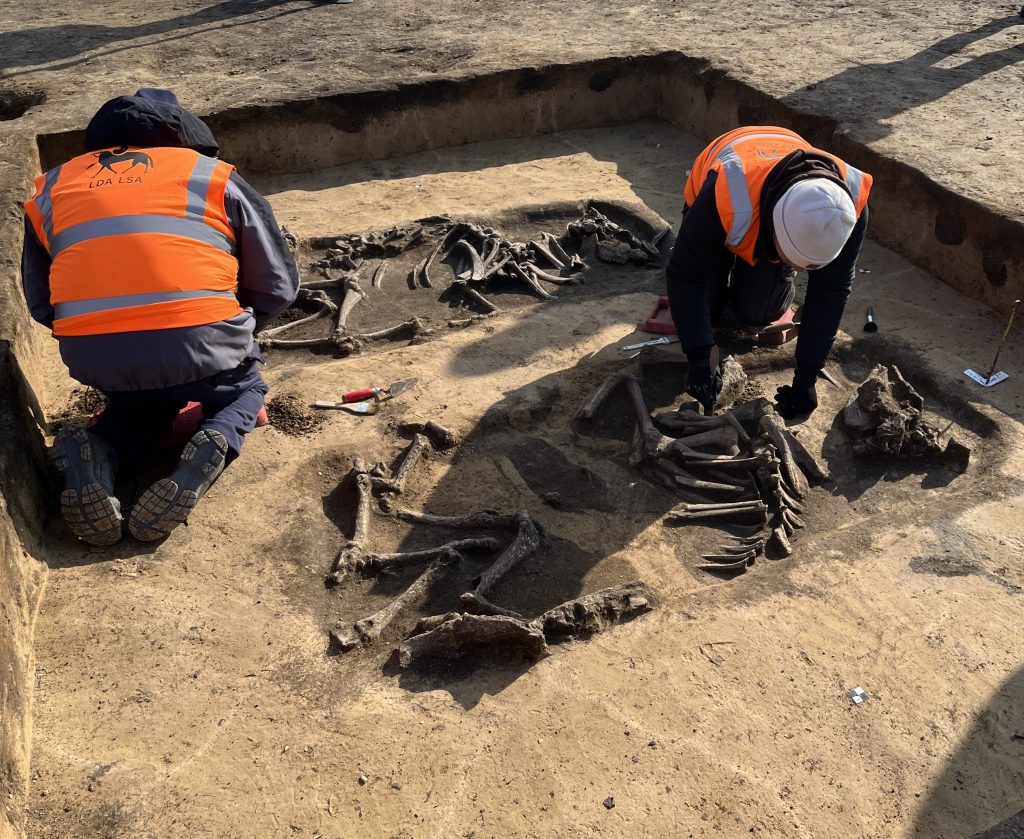Archaeology & History
The Site of a Proposed Intel Plant Sits Atop Neolithic Burial Mounds
The ground dates back 6,000 years.

The ground dates back 6,000 years.

Richard Whiddington

There had always been something slightly curious about the terrain of the Eulenberg industrial area outside Magdeburg, the capital of Saxony-Anhalt.
There’s a small hill, not particularly high, but certainly an outlier in an otherwise flat and far-stretching landscape. In 2023, ahead of construction on a pair of Intel semiconductor factories, archaeologists from the State Office for Heritage Management and Archaeology Saxony-Anhalt (LDA) decided to investigate.
The hunch proved correct. LDA has identified a Neolithic burial ground dating back 6,000 years that contains human and animal remains.
The site been connected with Baalberg culture that lived in the region between 4100 and 3600 B.C.E. The name derives from Baalberg, the site at which such culture was first find. The culture grew wheat and barley, raised pigs, sheep, and goats, and is associated with undecorated stone and earthen wares.
Of particular interest to archaeologists are two monumental burial mounds, approximately 650 feet from each other. Both were built above wooden burial chambers (66-feet by 98-feet) and both contained several burials.

Archaeologists working on site of a man and two cattle. Photo: State Office for Heritage Management and Archeology Saxony-Anhalt, Oliver Dietrich.
A corridor linking the two mounds together points to a ritualistic procession. Along this path archaeologists found a pair of young cattle and a 35 to 40-year-old man. Together, they create the image of a cart with a driver or a plow pulled by cattle. It’s a practice known from other period burial sites in the region. It has been associated with Globular Amphora culture (roughly 3300 to 2800 B.C.E and points to a group offering their most valuable possession to the gods.
“Our ancestors recreated a scene from their lives here, a team of cattle with the coachman behind them,” archaeologist Susanne Friederich told German news outlet MDR. “They gave the most precious thing to the gods: cattle, the guarantor of life.”
One point of interest is the length of time that the site was used. Archaeologists found a foot-and-a-half wide ditch running along the procession route. It dates from around 1,000 years after the burial. Nearby, the team also found burial mounds connected to Corded Ware Culture, which date to between 2800 and 2050 B.C.E.
Together, these burials show that the area remained important for prehistoric peoples over the course of thousands of years.
“The consistency in the ritual use of this part area astonishing,” LDA said. “The subsequent analysis of the finds promises even more interesting insights.”
LDA will conclude its excavations on the burial mounds in April this year with construction on Intel’s plants set to begin.